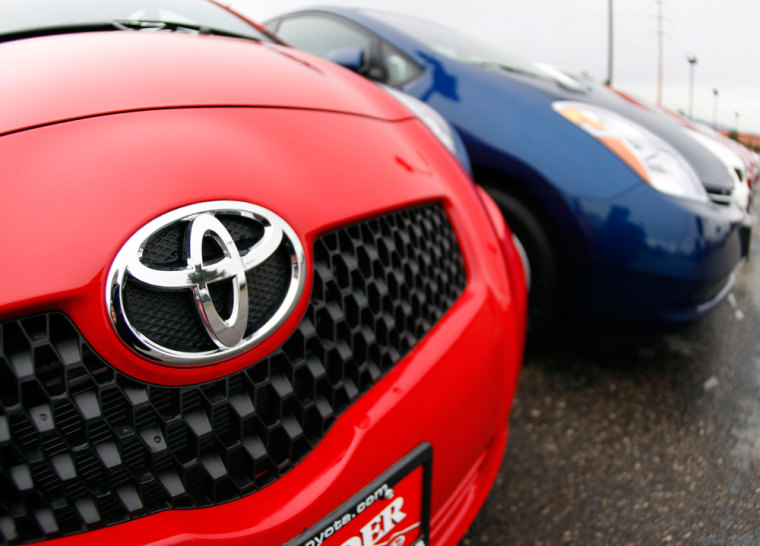Seen for years as a bright light in an otherwise mostly gloomy automotive industry, Toyota sent a stark message Thursday signaling that even the venerable Japanese automaker is not immune from the contagion infecting the North American market.
The maker of the popular Prius hybrid sedan and the top-selling Camry had been on a roll, with the sales of its fuel-efficient models benefiting from soaring gas prices.
But on Thursday, Toyota reported a 28 percent drop in net profit to $3.05 billion for the first quarter — the Japanese automaker's first quarterly decline in profit since 2005. And the company said it expects to report its first annual decline in profit in seven years.
What’s ailing Toyota? Simply put, the automaker is subject to the same forces battering other car companies, including surging raw material prices and a waning U.S. economy. Toyota is also being hurt by a Japanese yen that is surging in value against the U.S. dollar.
Of course, Japan's decline in profit is a far cry from the pain being suffered in Detroit. GM lost $3.3 billion in the first quarter. Ford posted a surprise profit of $100 million for the same period but expects to lose money this year as the auto market deteriorates.
Still, Toyota's armor has been dented.
“[Toyota] is going to have to ride out the storm just like everyone else,” said Rebecca Lindland, senior automotive analyst at consultancy Global Insight. “That doesn’t mean that their fortunes are any less positive, it’s just that profitability will be weak for the foreseeable future. But of course weakness is relative — no one is kidding themselves that this will be a long-term trend for Toyota.”
Toyota's sales numbers for April showed the automaker is holding up better than its U.S. rivals, with U.S. sales up 3 percent, largely on the strength of its subcompact Yaris and hybrid Prius. General Motors, Ford and Chrysler all saw double-digit sales declines during the month.
Toyota has been steadily boosting sales in recent years and is expected to overtake GM this year as the world's leading automaker in unit sales.
But that battle for the crown may not be over. News of a significant decrease in profit this year for Toyota indicates that the automaker has its own problems, and chief among them is a weakening U.S. dollar and rising yen. When the Japanese yen gains in value against the dollar, it eats away at Toyota’s North American profit, which the automaker must convert back into yen, explained Lindland.
“One of their biggest issues is weakness in the dollar, and it’s also a problem for other overseas automakers operating in the United States, like BMW and Mercedes,” she said. The opposite is true for U.S. automakers selling their products overseas — when they repatriate their profits from overseas they generate more dollars, increasing the bottom line.
Other Japanese automakers including Mitsubishi, Honda and Mazda also have said their profits will decline significantly this year as a result of the yen. That’s why many overseas automakers are looking to build cars in the United States, to hedge against fluctuations in currency, she said.
Another issue for Toyota is the fact that it is a mature company. Whereas before Toyota grew its sales by moving into areas where it hadn’t produced vehicles in the past, such as when it muscled into the highly profitable full-size pickup truck market with its new Tundra in 2006, now the automaker is in almost every U.S. segment. So Toyota needs to find new ways to drive growth.
“There’s not a lot of new ground for them to cover, so they have to get incremental sales,” Lindland said. “They need to get new people interested in their brand, and even for Toyota that can be difficult in an automotive market that’s shrinking, like the U.S. market.”
“This just means there are unique challenges ahead of Toyota — they need to keep their current client base and also lure new customers and try to maintain their impressive growth,” she continued. “The question now is will they capture Generation Y? The car consumers of that generation don’t give the same blanket approval to Japanese brands as their parents, and they are more open to explore new brands. So the future for Toyota is by no means clear of obstacles.”
